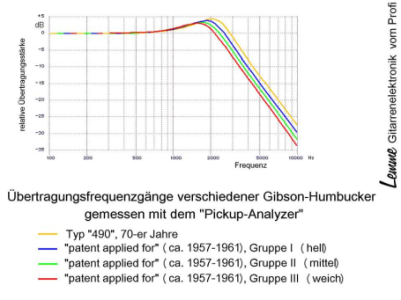freefrog
Well-known member
For anybody looking outside the traditional Gibdon PAF style the TV Jones Powertron is a damn good option. It shares a lot of ground with them tonally sitting somewhere inbetween the Gibson '57 Classic, the Burstbucker I, and a vintage style Filtertron in my opinion. It's equally at home in roots, blues, classic rock, hard rock, and even more vintage style metal tones. It also rips for gritty slide tones.
I don't remember if I've evoked that or not recently here but... putting a 3,3nF capacitor in parallel with a bridge Filter'Tron (standard specs) revoices it in a P.A.F.ish way. Much more useful than the usual "mud switch" in Gretsch guitar - or a good way to make this mud switch finally usable IME. ;-)


